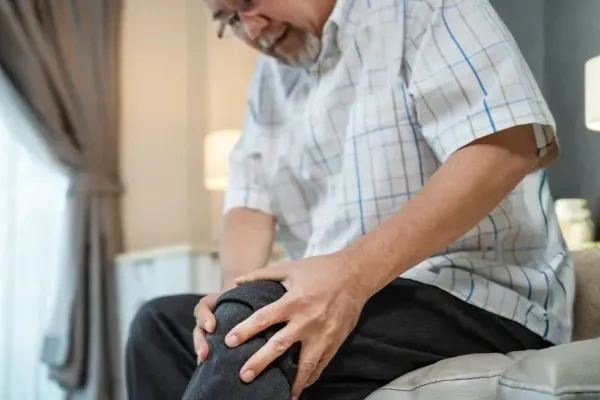Topics
Chickenpox symptoms
Chickenpox, caused by the varicella-zoster virus, is highly contagious and marked by an itchy, blister-like rash. This rash typically starts on the chest, back, and face, then spreads to other areas.
The virus spreads mainly through respiratory droplets when an infected person coughs or sneezes, or through direct contact with the blisters. A pregnant woman can pass the virus to her baby via the placenta, or through close contact and respiratory droplets after birth.
Before the rash appears, symptoms like fever, fatigue, headaches, and loss of appetite may occur for a few days. The hallmark of chickenpox is the development of itchy, fluid-filled blisters that eventually scab over. This process usually lasts about a week. The incubation period ranges from 10 to 21 days, with the person becoming contagious about two days before the rash appears, and remaining so until all blisters have scabbed over.
Duration of chickenpox itchiness
After red spots appear on the child’s skin, they quickly fill with clear fluid. These fluid-filled blisters release chemicals that cause an itching sensation, which typically starts in the second stage, once the blisters and red spots form.
Itching may persist for several days to weeks until the blisters scab over and fully heals. New spots can continue to appear in waves for three to five days after the initial rash, meaning that different spots might be at various stages of blistering or drying out at the same time.
Risks and complications of scratching chickenpox blisters
Chickenpox is a common childhood illness, but the constant itching can be distressing for both children and parents. Scratching not only increases discomfort but also poses several risks.
When children scratch, they can break the skin, creating open wounds that are prone to bacterial infections. These infections can complicate chickenpox and may require antibiotic treatment.
Additionally, frequent scratching can cause scarring, especially if blisters become infected or are continuously irritated, leaving marks that may linger long after the infection clears. Lastly, scratching can exacerbate the itching, prolonging the discomfort associated with chickenpox.
Ways to relieve chickenpox itching
Since chickenpox is highly contagious, the infected child should be kept isolated and avoid contact with others, especially newborns, pregnant women, and those with weakened immune systems, until all blisters have crusted over.
On top of that, chickenpox care mainly involves easing symptoms and preventing complications. Make sure your child gets plenty of rest to help their body fight the infection and recover faster. Keep your child hydrated by offering plenty of fluids. Over-the-counter medications like paracetamol can be given for fever and pain relief from fever and pain, while antihistamines can help reduce itchiness.
In fact, once your child is affected by chickenpox, dealing with the relentless itch is a top priority. But how can you convince a young child to resist that overwhelming itch?
To soothe the skin and alleviate itching, you can apply topical treatments such as calamine lotion and petroleum jelly or give your child colloidal oatmeal baths.
Calamine lotion | The cooling effect of calamine lotion can help reduce the urge to scratch. Shake the bottle thoroughly before applying. Dab a small amount of calamine lotion onto a cotton ball or pad and gently apply to the itchy areas on your child’s skin. Allow it to air dry and reapply whenever necessary. |
Petroleum jelly | Petroleum jelly can help prevent further itching by keeping the skin moisturised and creating a barrier. Make sure your child’s skin is clean and dry. Apply a thin layer of petroleum jelly to the itchy areas. Gently rub it in until it is absorbed and reapply whenever necessary. |
Colloidal oatmeal baths | Colloidal oatmeal helps to calm irritated skin and provides relief from itching and discomfort. Fill a bathtub with lukewarm water and add colloidal oatmeal, which is finely ground oatmeal specifically made for baths. You can buy this product at most pharmacies. Thoroughly stir the water until the oatmeal is evenly distributed. Let your child soak in the tub for a few minutes before gently wipe with a soft cloth after the bath. Repeat as often as needed. |
Other strategies to help prevent your child from scratching chickenpox blisters include keeping their nails trimmed, which helps reduce the risk of breaking the skin and causing infections.
For younger children who may not understand the consequences of scratching, consider using mittens or socks on their hands. Dressing your child in loose-fitting clothing made of cotton or other breathable fabrics can also help minimise irritation.
Positive reinforcement can be a useful approach as well. Encourage your child to refrain from scratching by offering rewards or incentives as motivation.
Preventing chickenpox
Vaccination is a safe and effective way to protect against the varicella-zoster virus and its associated complications. This vaccine is usually administered in two doses: the first dose at around 12-18 months of age, and the second dose at 4-6 years of age. For older children, 2 doses required with 4-8 weeks interval.Seeing a doctor for chickenpox itch
Chickenpox is typically managed well at home. However, seek immediate medical attention if you notice any of the following:
- Redness around the blisters that is increasing or becoming more prominent.
- Pus or discharge coming from the blisters.
- Significant swelling at the affected areas.
- Severe and persistent itching despite using home remedies and over-the-counter medications.
- Worsening of symptoms.








